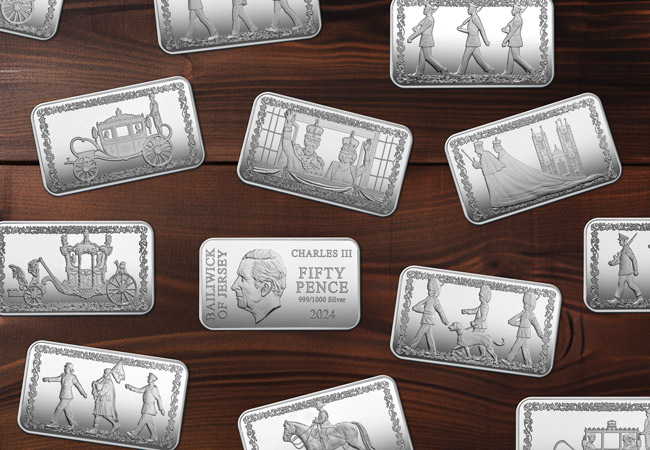Posts by Chris Bowditch
CLOSER LOOK: The history-making vehicles that inspired an impressive set of 50ps…
This year, we’re celebrating 120 years of thrilling competition and daredevil feats with the NEW Isle of Man History of Motor Racing 50p Set.
We travelled to The National Motor Museum in Beaulieu where we met Patrick Collins – Curator: Vehicles and Research – who gave us a closer look at the history-making vehicles that inspired these impressive 50ps…
Watch our video below:
The Isle of Man Motor Racing 50p Set
Available exclusively from The Westminster Collection, this new 50p Set celebrates FIVE Motor Racing FIRSTS with each design featuring an iconic vehicle from history.
1904 – The FIRST Motor Race
The first motor race held on the Isle of Man decided Britain’s representatives for the Gordon Bennett Cup, marking the dawn of competitive Manx Motor Racing. Walter Thomas Clifford triumphed, covering the gruelling 255-mile course in 7 hours and 26 minutes in his Napier.
1907 – The FIRST Isle of Man TT Race
Fast forward to 1907, and we arrive at the birth of an iconic event – The first TT (Tourist Trophy) Race which was won by Rem Fowler on a Norton. This world-famous motorcycle race is synonymous with the Isle of Man and has been celebrated on a series of Isle of Man £2 Coins too!
1923 – The FIRST TT Sidecar Race
1923 was a landmark year for Manx Motorsports. First, the TT Sidecar Race was introduced – adding an extra layer of excitement to the race. The first Sidecar race was won by Freddie Dixon and passenger Walter Denney, who rode a Douglas to victory.
1923 – The FIRST Manx Grand Prix
1923 also marked the inaugural Manx Grand Prix. Known as the amateur’s alternative to the TT, the first Grand Prix was won by Len Randles on his 500cc Sunbeam.
1963 – The FIRST Manx Rally
Rounding out this extraordinary set is the coin celebrating the first Manx Rally in 1963. This landmark event was won by Reg McBride and Don Barrow in a Ford Anglia Allardette.
Available Exclusively from The Westminster Collection
You can view the Complete Isle of Man Motor Racing 50p Range on The Westminster Collection website. Prices start from JUST £37.50 and I’ve already seen SELL OUTS.

Operation Colour Scheme. The Fire Service’s Top Secret D-Day Mission.
2024 marks the 80th anniversary of D-Day. On 6th June 1944, the Allied Forces launched one of its biggest military operations – they came by land, sea and air and would eventually bring about the liberation of Europe and the end of World War II.
But as D-Day was being planned, more and more equipment was stockpiled in the South of England and needed to be protected, and that’s why the National Fire Service Commanders were tasked with a top secret mission of their own – Operation Colour Scheme.

Operation Colour Scheme: Protecting the Overlord Invasion’s Infrastructure
Operation Colour Scheme, a little-known but vital aspect of the Fire Service’s activity in World War II, involved moving 11,000 firemen and women and over 1,200 fire fighting vehicles to the South of England to protect resources being stored in rural areas.
In 1943, the German bombing offensive was at a lower level and so it was decided that fire fighting resources could be moved from areas in the North and the Midlands to areas in the South to cover sites that now required a higher level of protection, including:
- Logistical supply sites
- Harbours linked to the D-Day invasion – most notably coastal areas of East Sussex and an armada of ships in the lower reaches of the Thames
- Ammunition dumps
- Petrol pipe lines
The Colour Scheme – and what each colour meant
And to aid planning, England and Wales were split into 12 regions – with each region given a colour to represent the level of risk each region faced:
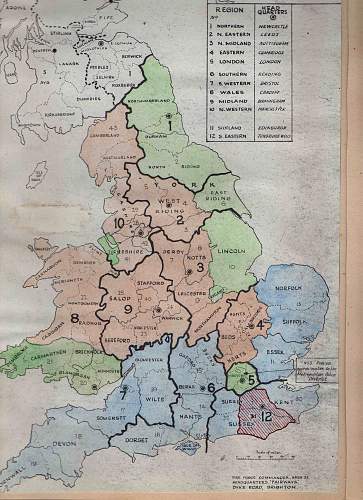
War Relics Forum
- Regions shaded Purple and Blue needed to be reinforced to above their maximum strength – the Purple regions were most impacted
- Regions shaded Green needed to be reinforced up to their maximum strength
- Regions shaded Brown were areas from which resources could be drawn from to provide for Purple, Blue and Green regions
The crucial role of the Fire Service during World War II
The war years proved to be the busiest for our Fire Brigades with fire fighters on the front line protecting communities during Air Raids and as part of Operation Colour Scheme.
Fire fighters were issued with one basic uniform; a steel helmet, rubber boots, trousers and waterproof leggings – although shortages saw some stuck with just Post Office uniforms!
The first air raid on London took place on 7th September 1940 and this would mark the start of The Blitz – where London endured bombings for 57 nights in a row. Most of the air raids took place at night, meaning fire fighters spent long hours extinguishing fire or dealing with explosions.
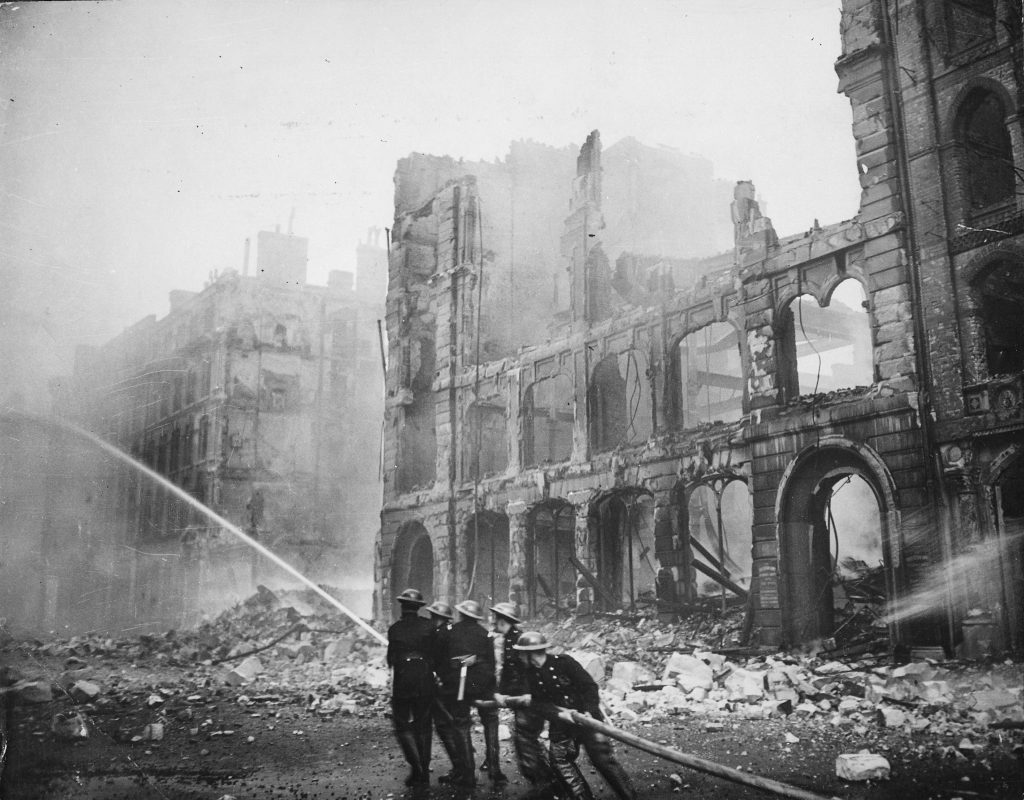
New York Times Paris Bureau Collection, Public domain, via Wikimedia Commons
In the first 22 nights of air raids, fire fighters had fought nearly 10,000 fires – and for many, this was their first experience of fire fighting…
And by 1943, over 70,000 women had enrolled in the National Fire Service, many becoming fire watches and drivers and managing the communications network.
Britain’s Prime Minister, Sir Winston Churchill honoured these great efforts and once said that the fire service “were a grand lot and their work must never be forgotten”.
The BRAND NEW History of the Fire Brigade 50p Collection
Issued to mark 200 years since the establishment of Britain’s first Municipal Fire Service, The History of the Fire Brigade 50p Collection shares the story of two centuries of heroic service.
Included in the set is the 1934 London Fire Brigade 50p Coin which depicts a World War II Fire Engine – a Dennis Chassis with an extendable ladder – in front of a background representing the city during The Blitz.

Each coin has been officially authorised by Buckingham Palace and King Charles III to pay tribute to the unsung heroes who have battled flames and saved lives for centuries.
A variety of specifications are available to order today from The Westminster Collection. Click here to view the COMPLETE range >>
One Year On: Five Facts About King Charles III’s Coronation Procession
One year has passed since the grandeur of King Charles III’s Coronation Procession swept through the streets of London, a momentous occasion that united the nation in celebration.
And as we reflect on King Charles III’s first year as King, let’s journey back to the splendour and spectacle of that unforgettable day.
Here are five facts about the impressive Coronation Procession:
It was the largest Ceremonial Military Operation in 70 years
The largest operation of its kind since Queen Elizabeth II’s Coronation Procession in 1953, two meticulously planned Processions accompanied King Charles III and Queen Camilla on the 1.42-mile route to and from Westminster Abbey.
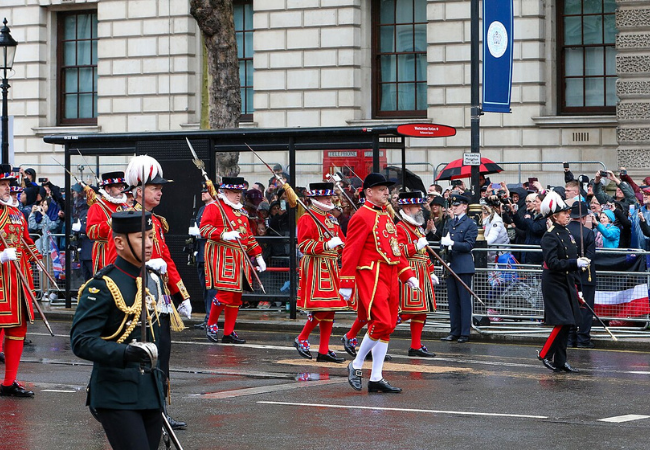
Image Credit: Katie Chan, CC BY-SA 4.0 via Wikimedia Commons
Over 4,000 Servicemen and Women Took Part
Over 4,000 Armed Forces Personnel from at least 35 Commonwealth nations marched alongside Their Majesties during the Procession, this included representatives from The British Army, The Royal Air Force, The Royal Navy, The Royal Marines, The Household Division and The Royal Canadian Mounted Police.

Image Credit: Katie Chan, CC BY-SA 4.0 via Wikimedia Commons
A Coronation First Took Place at Buckingham Palace
For the first time, the Procession formed up in the gardens of Buckingham Palace to give a Royal Salute and three cheers to the new King and Queen. King Charles III and Queen Camilla stepped out onto the West Terrace of the Palace to receive the salute.
The Coronation Flypast Had To Be Altered Again
The famous Buckingham Palace Balcony Appearance was due to be accompanied by a spectacular six-minute flypast including more than 60 aircraft, but the plans were scaled back due to the poor weather forecast. This also happened in 1953 as Queen Elizabeth II’s Coronation Flypast also had to be altered on the day due to poor weather conditions.
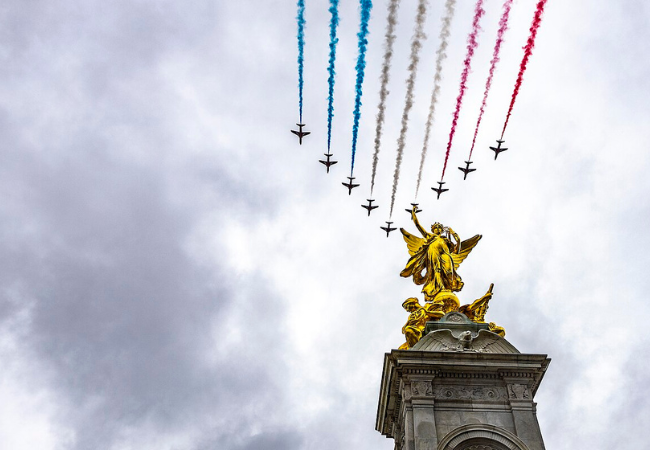
Image Credit: Ministry of Defence, OGL 3 via Wikimedia Commons
The Gold State Coach isn’t as comfortable as it may look
Their Royal Majesties travelled to the Abbey in Queen Elizabeth II’s Diamond Jubilee State Coach and once crowned, returned to Buckingham Palace in the ornate Gold State Coach.
Queen Elizabeth II, who used the coach for her Coronation, said that the Coach might look luxurious but it was an uncomfortable ride due to the lack of suspension!
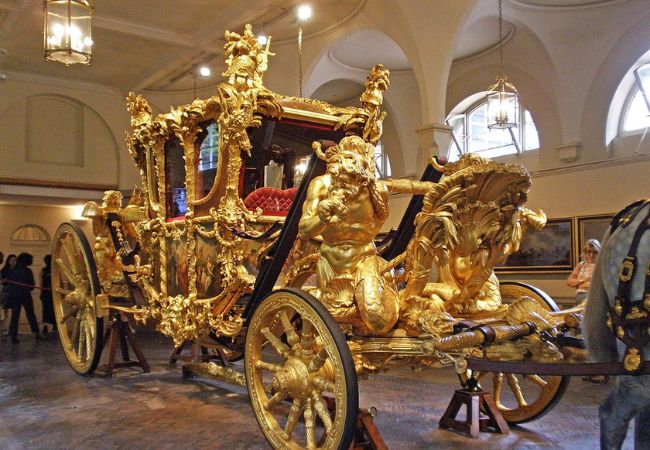
Image Credit: Amanda Slater, CC BY-SA 2.0 via Wikimedia Commons
Other members of The Royal Family followed in the Australian State Coach, the Irish State Coach and the Scottish State Coach. Princess Anne rode behind the Golden State Coach on horseback as with His Majesty’s Guards.
The Ultimate Tribute To King Charles III’s Coronation Procession
Today you can own the ultimate tribute to our nation’s FIRST Coronation in OVER 70 years – The King Charles III Coronation Silver 50p Coin Bar for JUST £9.99 (+p&p) when you trial the King’s Coronation Procession Collection.
This is an extra special specification. Each coin in the collection has been carefully struck from 99.9% Pure Silver to a pristine Proof finish and despite being struck to a rectangular shape – it still carries a fifty pence denomination!
Continue collecting and you’ll build an enviable collection of stunning Silver 50ps featuring scenes taken straight from the Coronation Day!
And what’s more, each coin has been fully approved by His Majesty King Charles III himself!
Click here to secure yours for our introductory price of JUST £9.99 (+p&p) >>


